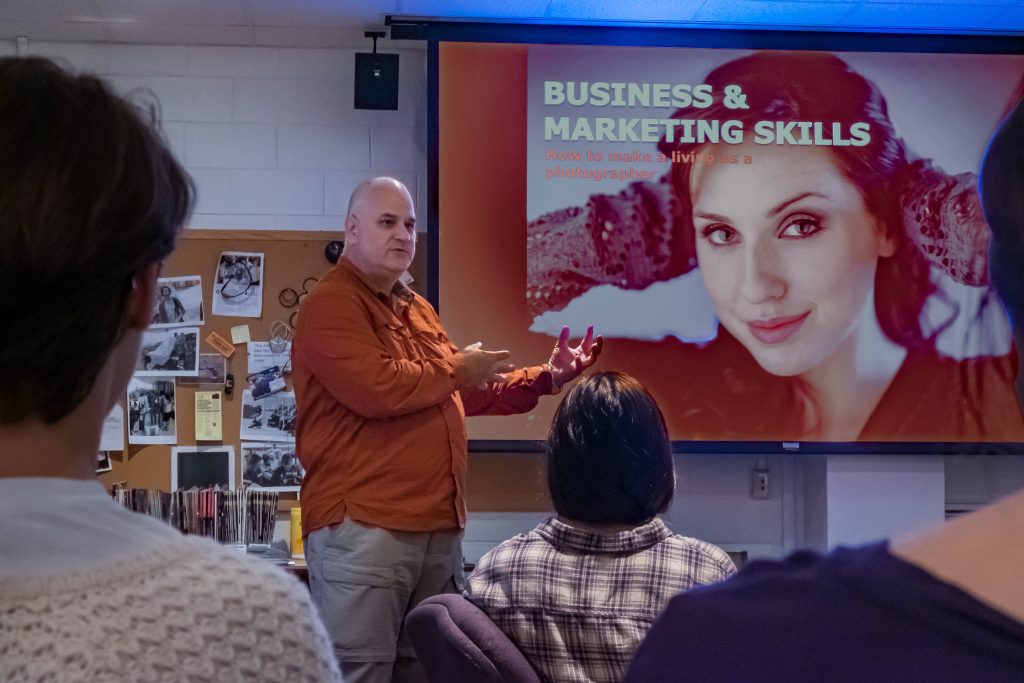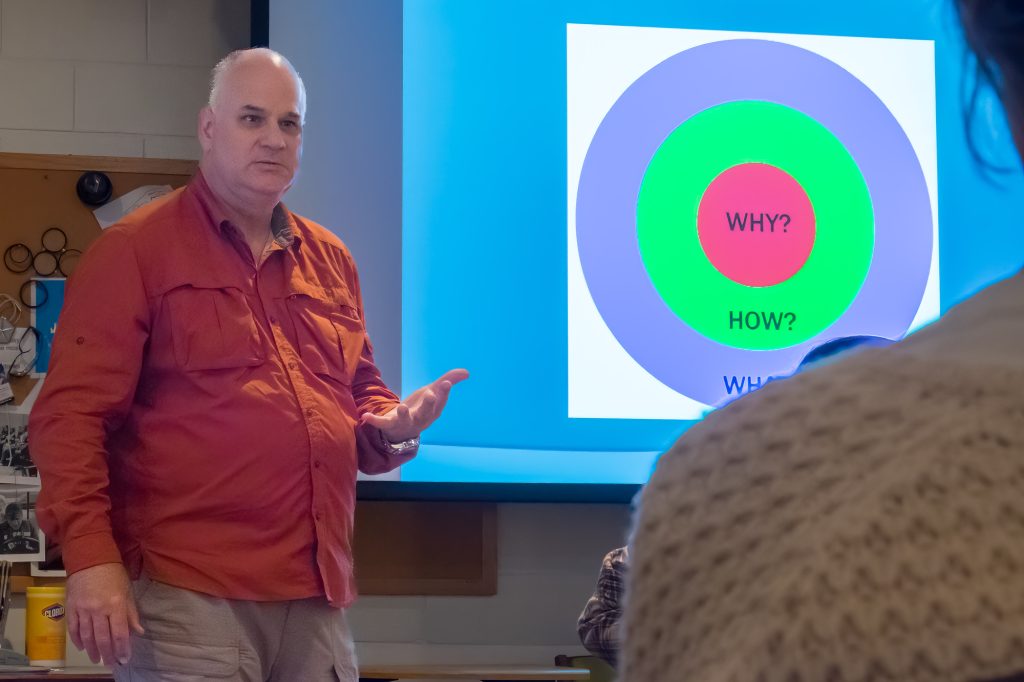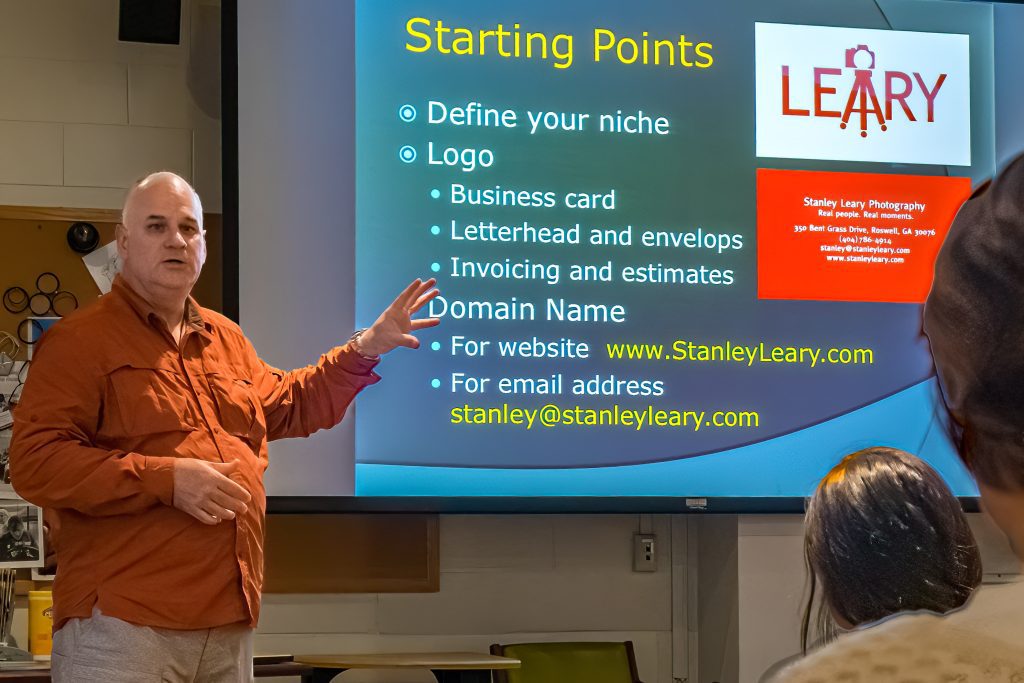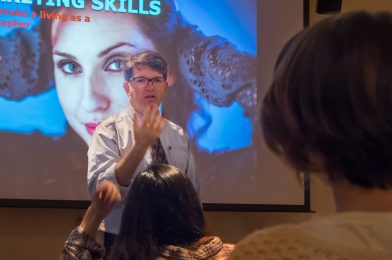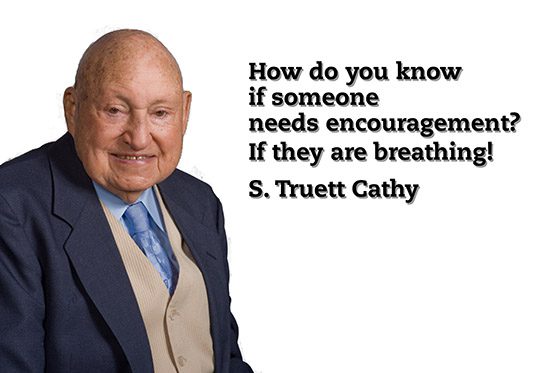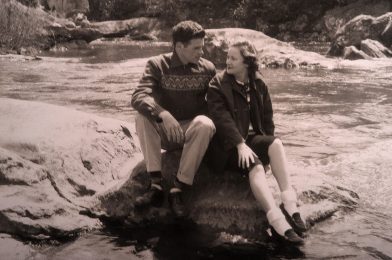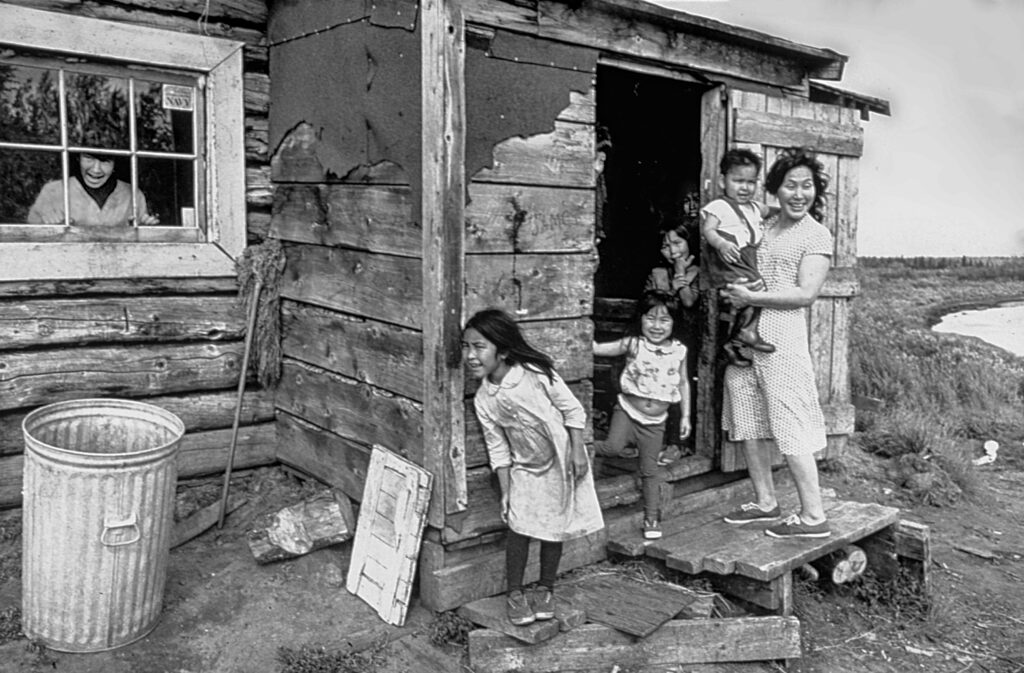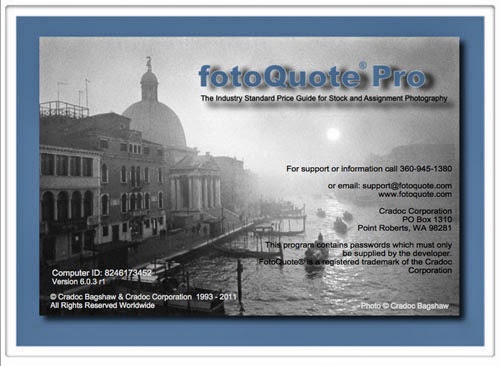There are many ways you may get to show your work to someone. What you need to know is that you never know who is the actual person who may end up hiring you. For example, while this person was reviewing the work by the legendary Dave Black, two other people were watching.
I know that one of those looking on was probably more likely to be the one who could hire the person than any of the others, including Dave.
Some photographers speak to groups, and many of those groups are other photographers. For example, Joanna Pinneo, National Geographic Photographer, speaks to a group of photographers. In the room were a few of us who would hire Joanna to do work for some of our clients. I know I called her and had her shoot some work for Chick-fil-A.
Every year at the Southwestern Photojournalism Conference in Fort Worth, TX, one of the biggest highlights of the conference is the 2-minute shows. Here is a link to the rules for the two-minute shows.
Here is one of the 2-minute shows that I used for one year.
[youtube https://www.youtube.com/watch?v=8Gk7ql99MXs]
One of the best things about the 2-minute show is it helps you to get your thoughts focused and presented in a timely fashion. I believe every photographer should have at least one or more 2-minute presentations that are self-contained. Creating a video is where you might voice over the photos to help clients know what you do and can do for them.
Today clients may not even give you 5 minutes for an in-person interview. Send me a link to your website, and you will hear a great deal. So, why not direct them to the 2-minute presentation you created for them?
Why did we use 2-minutes as a standard?
We used the elevator pitch as the one thing most of us should be able to do at a moment’s notice to get jobs. So here is Chris O’Leary’s outline to understand the Elevator Pitch’s core essentials.
What is an Elevator Pitch?
A quick definition of an Elevator Pitch is as follows:
An Elevator Pitch is an overview of a product, service, project, person, or other thing and is designed to get a conversation started.
Why do I need an Elevator Pitch?
It would help if you had an Elevator Pitch for one reason: time. But, unfortunately, most people are extremely busy and won’t give you much time to get their attention. As a result, you must get your point across exceptionally rapidly.
What is the purpose of an Elevator Pitch?
The purpose of an Elevator Pitch is to get the attention of the person you are talking to and convince them to keep talking to you.
How long should it take to deliver an Elevator Pitch?
In general, the less time, the better. More often than not, that means 30 seconds or less (the period of the typical elevator ride). However, sometimes an Elevator Pitch can run for as long as one or two minutes.
What are the characteristics of an effective Elevator Pitch?
An effective Elevator Pitch is nine things:
1. Concise
2. Clear
3. Compelling
4. Credible
5. Conceptual
6. Concrete
7. Customized
8. Consistent
9. Conversational
I highly recommend that every photographer attend the Southwestern Photojournalism Conference and do a 2-minute presentation. The goal is to hook people in the audience, so they want to talk to you. Then the other thing is to have a folder of images [20 or so] that you can sit down with people and get your work reviewed.
Many who come are editors looking to hire people for projects throughout the year. The seminar is a great time to show your wort some feedback and then make those changes to improve your presentation.
Tips for photographers who want to get hired more often
Treat every presentation you give as an opportunity to show the audience how you help clients improve their business.
Tip #1 Start on positive
Never start your presentation by apologizing. It sets a negative tone for the entire meeting and makes you look like you’re neglecting your responsibilities. Customers like to work with agents – not victims.
The only thing worse is an apology with strings attached. I’m sorry I am running late. I still need it the whole time.
Tip #2 Focus on the client
“I have 15 minutes left, and I’m only through 20 of my 58 PowerPoint slides,s so I will be going through this last bit quickly.” Sound familiar?
Guilting your audience into paying attention not only doesn’t work; it’s insulting. Don’t try to force your customers through your plan. Your presentation needs to focus on their needs – period.
Tip #3 Avoid Excuses
Talking about yourself instead of your customer’s needs will only waste time. Who cares where you were last night, how long your flight was, or how late you were up? Get over yourself, quit whining, and start focusing on your customer.
Tip #4 Start with the hook
Please put all your customers’ issues, problems, and objectives up front, and save your corporate marketing material for last. Your customer isn’t even slightly interested in hearing about how great you are unless they first hear about how you understand their problems and how you can solve them.
Tip #5 Smile
Don’t forget to smile. It would help if you continued to show how excited you are about what you do and the opportunity to work with them.
Tip #6 Remain visible
Be very careful not to turn your back on the audience. Face the audience is essential for you, and do not read your PowerPoint slides to them. People are reading your expressions and body language while you talk. Help them see you.
Tip #7 Watch your speed for talking
Talking too fast or too slow can be a turn-off. Instead, keep your speed conversational, as if you are having a cup of coffee with a friend.
Tip #8 Use real examples
Do use real-life examples, quotes, stories, and testimonials. They’re critical to making your account come alive and persuading people to buy your products or services. Make sure that these stories are as specific and relevant to your customer’s situation as possible.
After all, no matter how much you love that favorite anecdote about what happened last year at a friend’s house, unless it involves your customers’ problems, challenges, or your solution, a business presentation probably isn’t the best place to tell it!
Content AND Presentation
Too many photographers think their pictures alone will get them jobs. They may even have the work on the level of the best in the industry, but you must also be able to package your content [photos] in a way that is digestible for the audience.
Please stay in your time frame for your presentation. Please arrive early and test everything, so you know it is working.
Practice your presentation many times before giving it. Do not ever indicate that you haven’t run through before. Instead, try to find someone to listen to and give you feedback on your presentation.
Presidents take a few months to work on their State of the Union Address. Comedians take a year or two to prepare for a show. Musicians perform for a long time before they take their concert tours on the road.
Successful photographers prepare just as much. Those who can’t find jobs are the ones who are not prepared to present their work.
